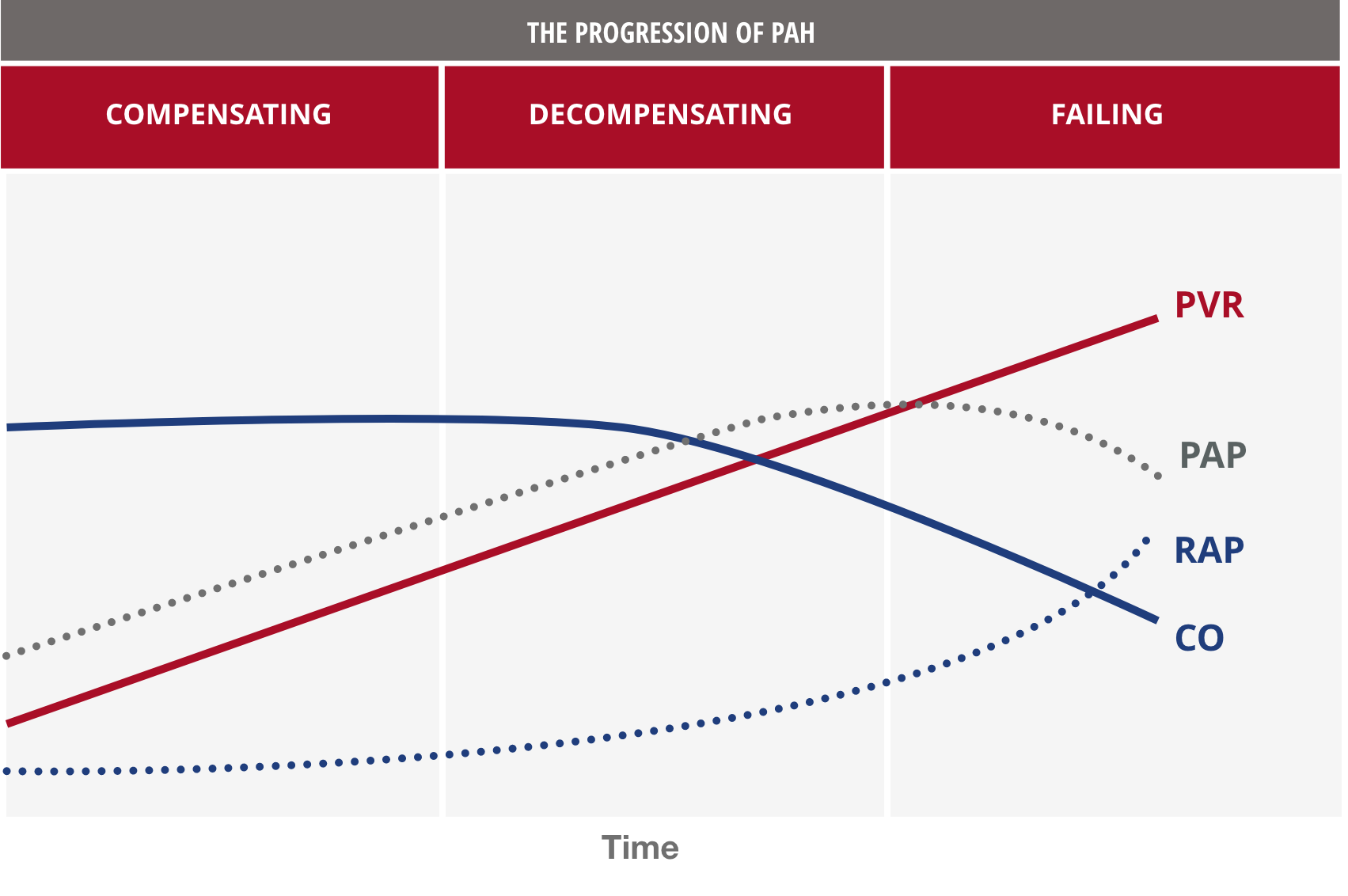- Nitric oxide pathway
- Endothelin pathway
- Prostacyclin pathway
WHAT IS PAH?
PAH AFFECTS 3 PATHOGENIC PATHWAYS IN PATIENTS1
Overproduction of endothelial vasoconstrictors, like endothelin-1, and underproduction of vasodilators—such as nitric oxide and prostacyclin—are associated with PAH.2
Targeting multiple pathogenic pathways is considered the current standard of care for people with PAH.2,3
PAH IS A RARE BUT DEBILITATING AND PROGRESSIVE DISEASE3
PAH progressively limits blood flow in the lungs, which over time can severely impact the heart and may eventually lead to right heart failure.4,5
- It affects 15 to ~60 people per 1 million inhabitants in countries where studies have been conducted (~1000 new cases diagnosed each year in the United States)6-8
- It’s more commonly diagnosed in women (70%-80% of cases) and in older patients (50-65 years old)6,9*
PATIENTS WITH PAH MAY UNKNOWINGLY BE AT RISK FOR DISEASE PROGRESSION10,11

SOURCE: Adapted from Klinger JR. J Respir Dis. 2009.
*PAH is more frequently diagnosed in elderly patients in current registries, while the mean age of patients in the first US NIH registry was 36 years.6
PATIENTS MAY BE ASYMPTOMATIC UNTIL ADVANCED VASCULOPATHY IS EVIDENT11

